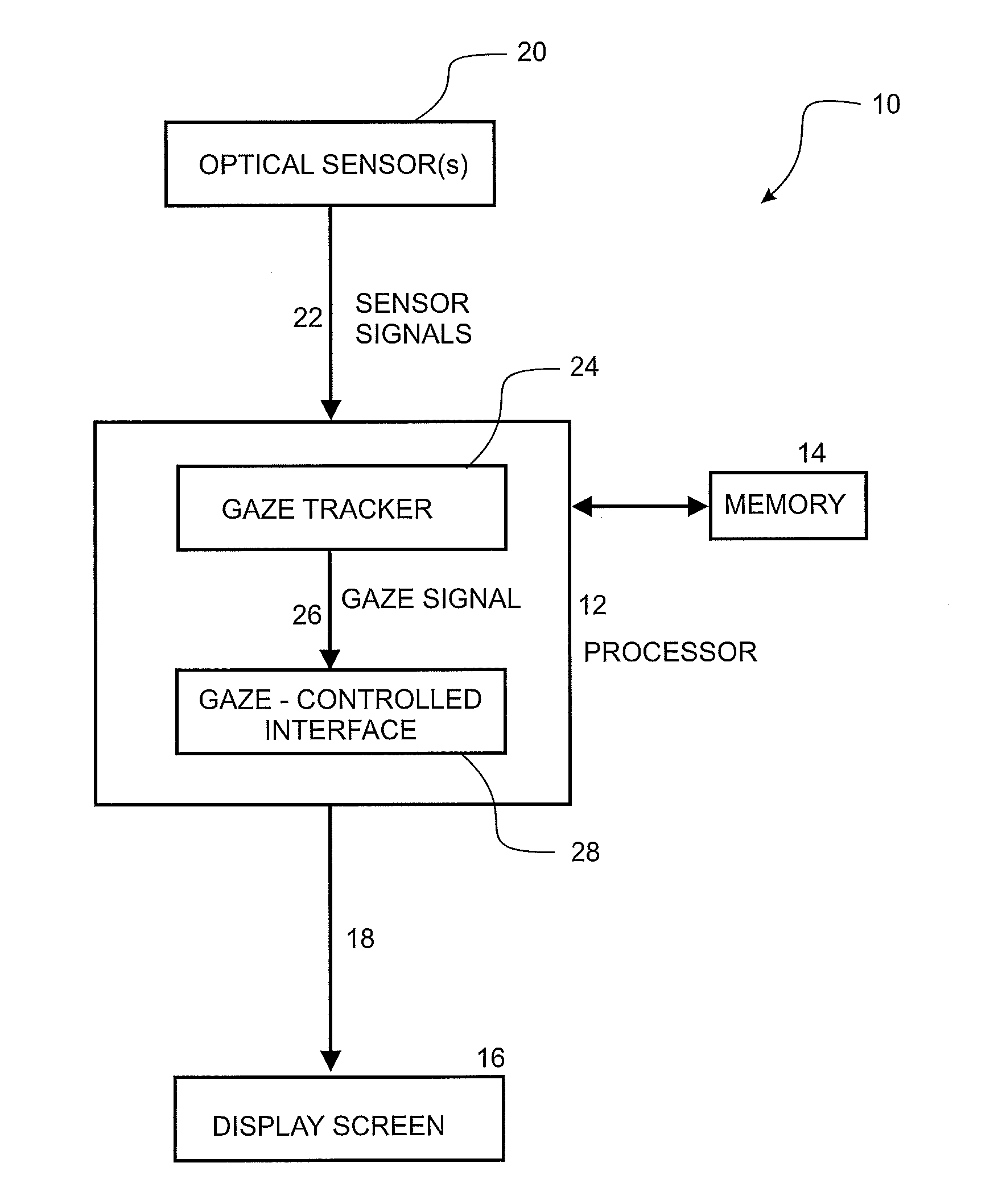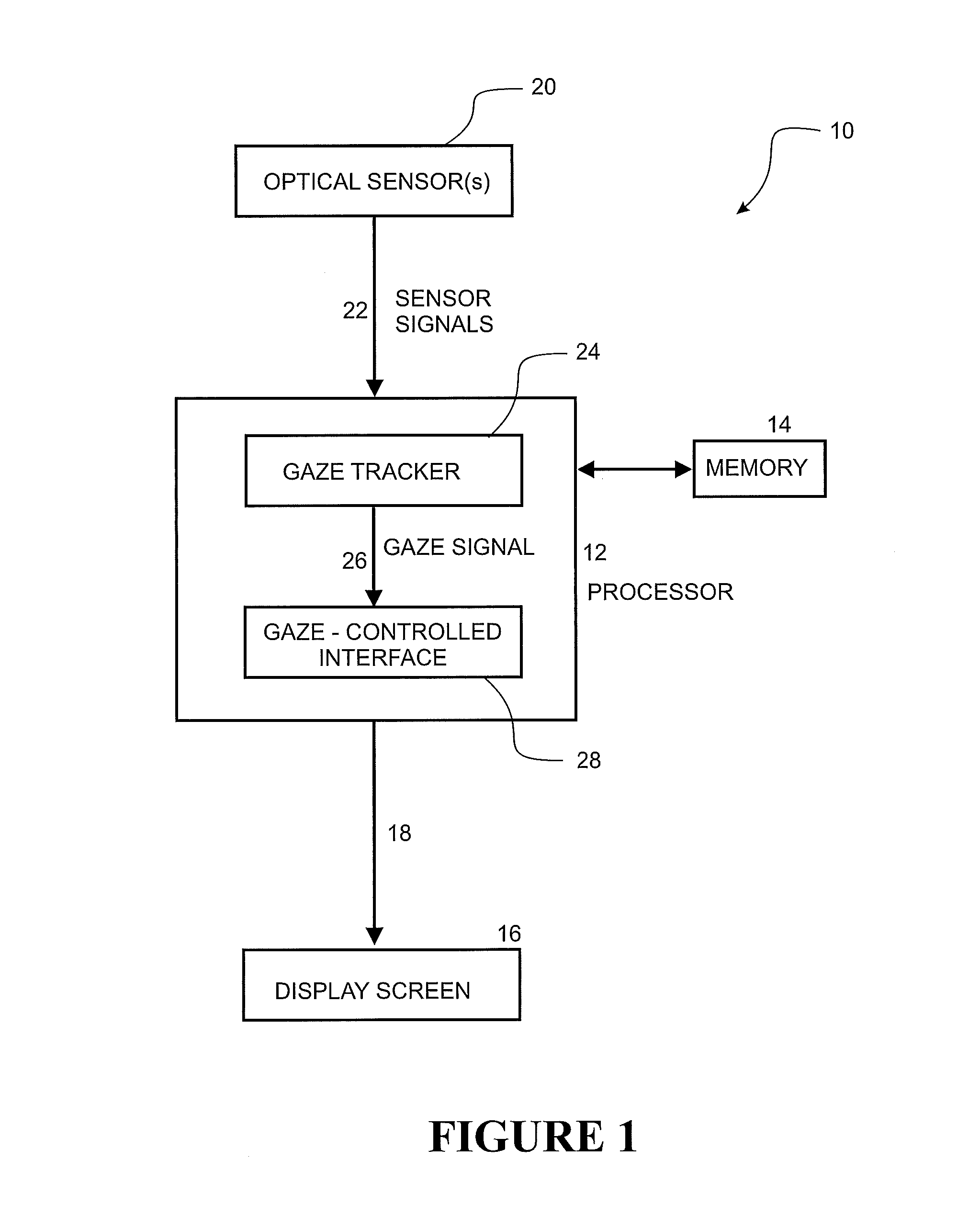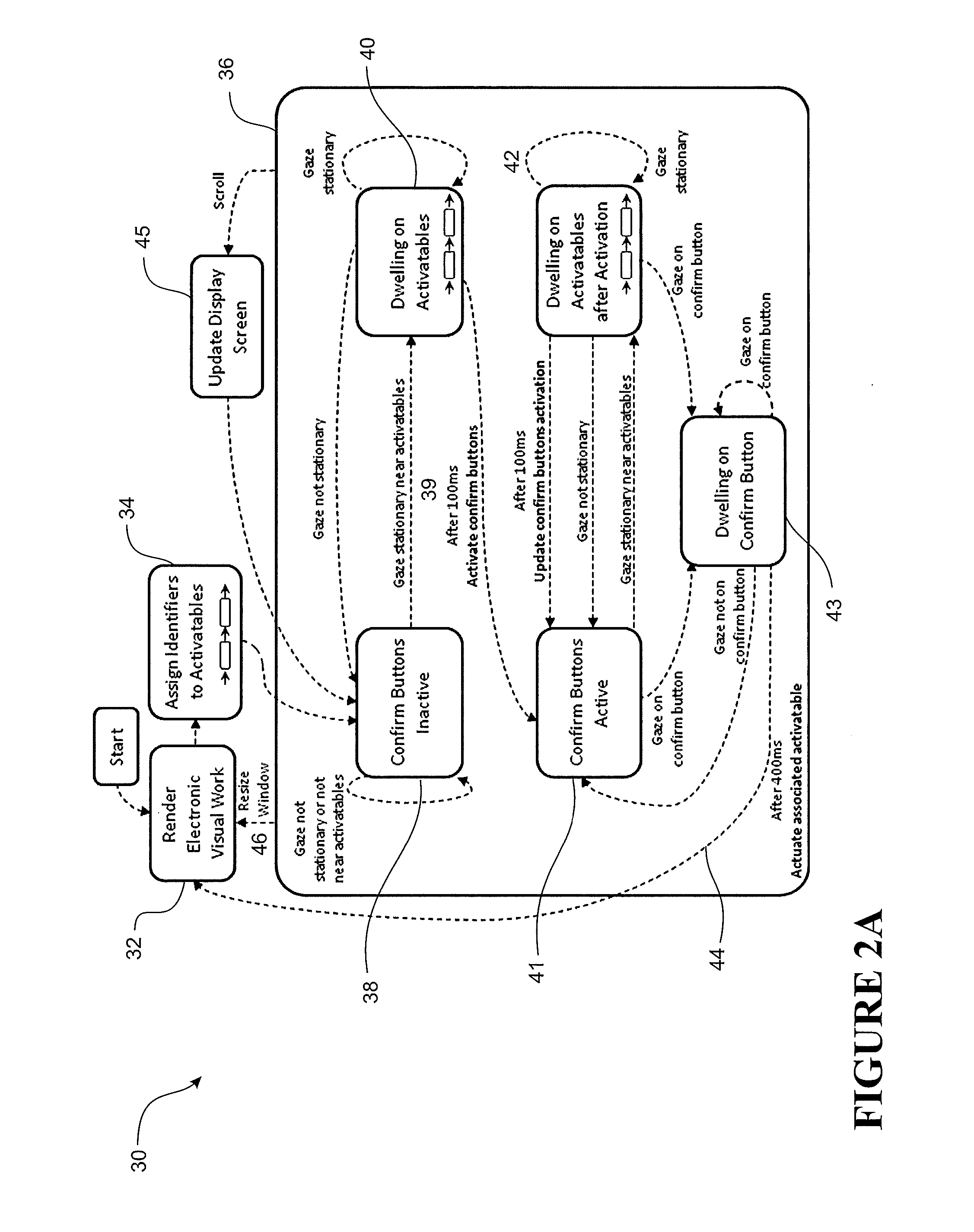Gaze-controlled interface method and system
- Summary
- Abstract
- Description
- Claims
- Application Information
AI Technical Summary
Benefits of technology
Problems solved by technology
Method used
Image
Examples
first embodiment
Confirm Button Activation and Actuation
[0129]Reverting to FIG. 2A, after the element visual identifier assignment stage 34 and modification of the presentation of the electronic visual work (e.g. webpage in this example) to present or render the activatables (e.g. hyperlinks in this example) with their assigned visual identifiers (e.g. colours in this example), the main gaze-controlled interface algorithm 36 begins. In this first embodiment, the main gaze-controlled interface algorithm 36 is an ‘activation threshold’ algorithm. Initially, all the confirm buttons are in an inactive state 38 when the user's gaze is not stationary or not near any activatable. When in an inactive state, the confirm buttons do not trigger or perform any action when dwelled on by the user.
[0130]If the user's gaze is sensed as being substantially stationary near activatables 39 the algorithm jumps to state 40 which corresponds to the user dwelling on or near activatables. If the user is sensed as gazing in...
second embodiment
Confirm Button Activation and Actuation
[0138]Reverting to FIG. 2B, after the element visual identifier assignment stage 34 and modification of the presentation of the electronic visual work to present or render the activatables with their assigned visual identifiers, the main gaze-controlled interface algorithm 47 begins. In this second embodiment, the main gaze-controlled algorithm 47 is an ‘a posteriori analysis’ algorithm. Initially, like the first embodiment, all the confirm buttons are in an inactive state 48.
[0139]In this second embodiment, as the user gazes on the electronic visual work, the algorithm enters a gaze recording state 49. In this gaze recording state, the algorithm records and stores, either temporarily or permanently, in memory gaze data representing the received gaze signal 26 from the gaze tracker 24. In a first form, the gaze recoding state 49 may be configured to record all gaze signals received continuously. In a second form, the gaze recording state 49 may...
PUM
 Login to View More
Login to View More Abstract
Description
Claims
Application Information
 Login to View More
Login to View More - R&D
- Intellectual Property
- Life Sciences
- Materials
- Tech Scout
- Unparalleled Data Quality
- Higher Quality Content
- 60% Fewer Hallucinations
Browse by: Latest US Patents, China's latest patents, Technical Efficacy Thesaurus, Application Domain, Technology Topic, Popular Technical Reports.
© 2025 PatSnap. All rights reserved.Legal|Privacy policy|Modern Slavery Act Transparency Statement|Sitemap|About US| Contact US: help@patsnap.com



